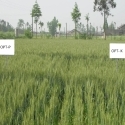19 Jun 2015
An Introduction to Guangxi Province
Guangxi province is located between 20054′- 26024′ N and 104026′- 112004′E. To its south is Beibu Bay, to its north is the Nanling mountains and the Yunnan-Guizhou Plateau lies to its west. It covers an area of 237,000 sq. km and has a population about 47,700,000 in 2014, including Han nationality and fifteen other minorities such as Zhuang (accounting for 32.7% of the total population), Han, Miao, Yao, Tong, Hui, Jing, Yi, Shui, Maonan, Mulam, Gelam, and so on. The overall landform slants from northwest to southeast and is a mosaic of landscapes including: mesas, basins, hills, hornitos, and small plains. The province receives ample solar radiation and is strongly influenced by the dry and wet monsoons in the winter and the summer. The average annual precipitation is 1070mm, ranging from 1500 to 2000mm for most of the regions and concentrated in April to September. The annual temperatures for different regions range from 16 to 23℃,increasing from the south to north and from mountains to valleys and plains. The extreme temperatures are 33.7-42.5℃ for the highs and -8.4—2.9℃ for the lows.
Main Soil Types
According to Chinese soil taxonomy, there are eighteen soil types in Guangxi. Lateritic and red soil are the two major soil types, accounting for 65% of the total land area. Of secondary importance are the yellow earth, paddy soil, purple soil and limestone soils. The major nutrient disorders in the cultivated soils are deficient in nitrogen, phosphorus and potassium. Calcium, magnesium and molybdenum are also deficient in the acidic soils. Acid soils account for 67% of the total farmland while calcareous soils account for the remainder. At the end of 2009, the total area of farmland was 4.43 million ha and a sowing area of 6.89 ha. The multi-cultivation index is about 1.55.
Agriculture
Rice is the major crop in paddy fields, which with the exception of the cool mountain areas, harvest two crops per year. In the upland fields, sugarcane, banana, corn, peanut, soybean, sweet potato, and cassava are the common crops. The main cropping systems are corn-peanut, corn-potato, peanut-soybean, peanut-potato, and paddy rice-vegetable-vegetable, vegetable-paddy rice-vegetable. Among the upland crops, sugarcane ranks number one both in the province and in China and followed by cassava. Production of banana and litchi follow the second in China only after Guangdong province.
Fertilizer consumption
The total fertilizer (nutrient) consumption was 2.427 million t in 2011, about 405 kg/ha of sowing area, relatively high among the provinces in China. Among the different nutrients consumed, there were 708,000 t of N, 296,000 t of P2O5, 548,000 t of K2O, and 875,000 t of compound fertilizers with a N:P2O5:K2O:compound ratio of 1:0.42:0.67:1.23, appeared to be one of the best provinces in balanced fertilizer use in China.




